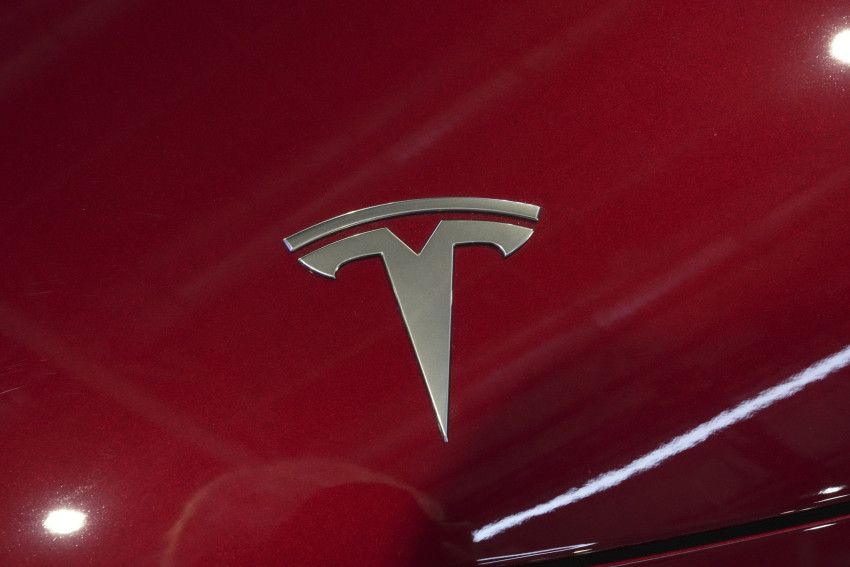
Tesla posted its first annual sales drop in more than a dozen years Thursday, sinking a stock that has soared since Donald Trump’s victory on optimism Elon Musk’s close relationship to the president-elect will help the company. Tesla’s global vehicle sales rose 2.3% in the final quarter thanks to 0% financing, free charging and low-priced leases.
But that was not enough for billionaire Musk's most valuable holding to overcome a sluggish start to 2024. The Austin, Texas, company sold 495,570 vehicles from October through December, boosting deliveries to 1.79 million for the full year.

That was 1.1% below 2023 sales of 1.81 million as overall demand for electric vehicles in the U.
S. and elsewhere slowed. The year-over-year global sales drop is Tesla’s first since 2011, according to figures from analytics firm Global Data.
The company sold 1,306 vehicles in 2010, but that dropped slightly to 1,129 the following year. The fourth-quarter boost came with a cost. Analysts polled by FactSet expected Tesla’s average sales price to fall to just over $41,000 in the quarter, the lowest in at least four years.
That doesn’t bode well for Tesla’s fourth-quarter earnings on Jan. 29 and Tesla's stock fell more than 7% Thursday. Musk donated more than $250 million to Trump’s campaign and is a regular guest at Trump’s Mar-a-Lago resort in Florida.
Tesla investors have pushed the stock up more than 50% since the election on hopes the new administration will streamline electric vehicle regulations and address other Musk policy priorities. In 2022, Tesla predicted that its sales would grow 50% most years, but the prediction ran into an aging model lineup and increased competition in China, Europe and the U.S.
In the U.S., analysts say most early adopters of technology already own electric vehicles, and more mainstream buyers have concerns about range, price and the ability to find charging stations on longer trips.
The fourth-quarter deliveries fell thousands short of Wall Street expectations. Analysts polled by data provider FactSet expected sales of 498,000 vehicles. Falling sales early in the year led to once-unheard of discounts for the automaker, cutting into its industry leading profit margins.
Competition from legacy and startup automakers is also growing as they try to nibble away at the company’s market share. Daniel Ives, a financial analyst at Wedbush, said he thinks the stock is still worth buying despite the sales drop. “We have never viewed Tesla simply as a car company.
..instead we have always viewed Musk and Tesla as a leading disruptive technology global player,” wrote Ives.
“And the first part of this grand strategic vision has taken shape.” The fourth-quarter sales, while a record for Tesla, show that the company’s aging model lineup is reaching saturation in the entry level luxury vehicle market, said Morningstar Analyst Seth Goldstein. Aside from the Cybertruck, which has had limited appeal, Tesla’s newest consumer model is the Y small SUV which first went on sale in 2020.
To meet Tesla management’s guidance of 20% to 30% annual sales growth this year, the company will need to come out with a vehicle priced in the mid $30,000s to appeal to more mainstream buyers who might be considering gas, electric or hybrid vehicles, Goldstein said. Tesla has floated the possibility of a new version of the Model Y that would cost in the mid $30,000s that may be smaller inside than the current Y with fewer features, Goldstein said. “At that point you’re comparable to some Hondas and Fords and GMs,” Goldstein said.
“It takes you out of the luxury market to the more affordable vehicle market.” Jeff Schuster, vice president of automotive research Global Data, said Tesla faces intense competition worldwide from EV makers in China, the U.S.
and elsewhere, many of which are selling EVs to more mainstream buyers. “If they want to continue to see the growth they had, they need to expand to other sizes and price points,” he said. Also, Musk’s support of Trump for U.
S. president also could be turning off some buyers who may be more environmentally conscious and lean toward Democrats, Schuster said. A broader, less costly lineup would appeal to a larger group of buyers, he said.
“I suppose the choices that he’s made on the political front don’t line up with a good portion of his buyers’ profile,” Schuster said. Industry experts say that Tesla used to be the only automaker with credible electric vehicles, but now others such as China’s BYD now have more to offer. At present, automakers have 75 electric vehicle models for sale in the U.
S. Through the first nine months of last year, electric vehicle sales slowed in the U.S.
, but they are still growing. Through September, new EV sales rose 7.2% to about 936,000 in the U.
S., according to Motorintelligence.com.
That’s slower growth than the 47% increase in 2023. But EV sales this year still are likely to surpass last year’s record of 1.19 million.
Most other automakers will report full-year sales on Friday. Nearly all of Tesla’s sales last quarter came from the smaller and less-expensive Models 3 and Y, with the company selling only 23,640 of its more expensive models that include X and S, as well as the new Cybertruck. Tesla's global electric vehicle sales edged out Chinese rival BYD, which announced Thursday that total soared 41% last year including 1.
77 million EVs. The company is vying with Tesla for the world’s top selling EV maker. Fourth quarter production of 459,445 vehicles was below total deliveries for the quarter, and full year production of 1.
77 million was less than the year’s sales..















